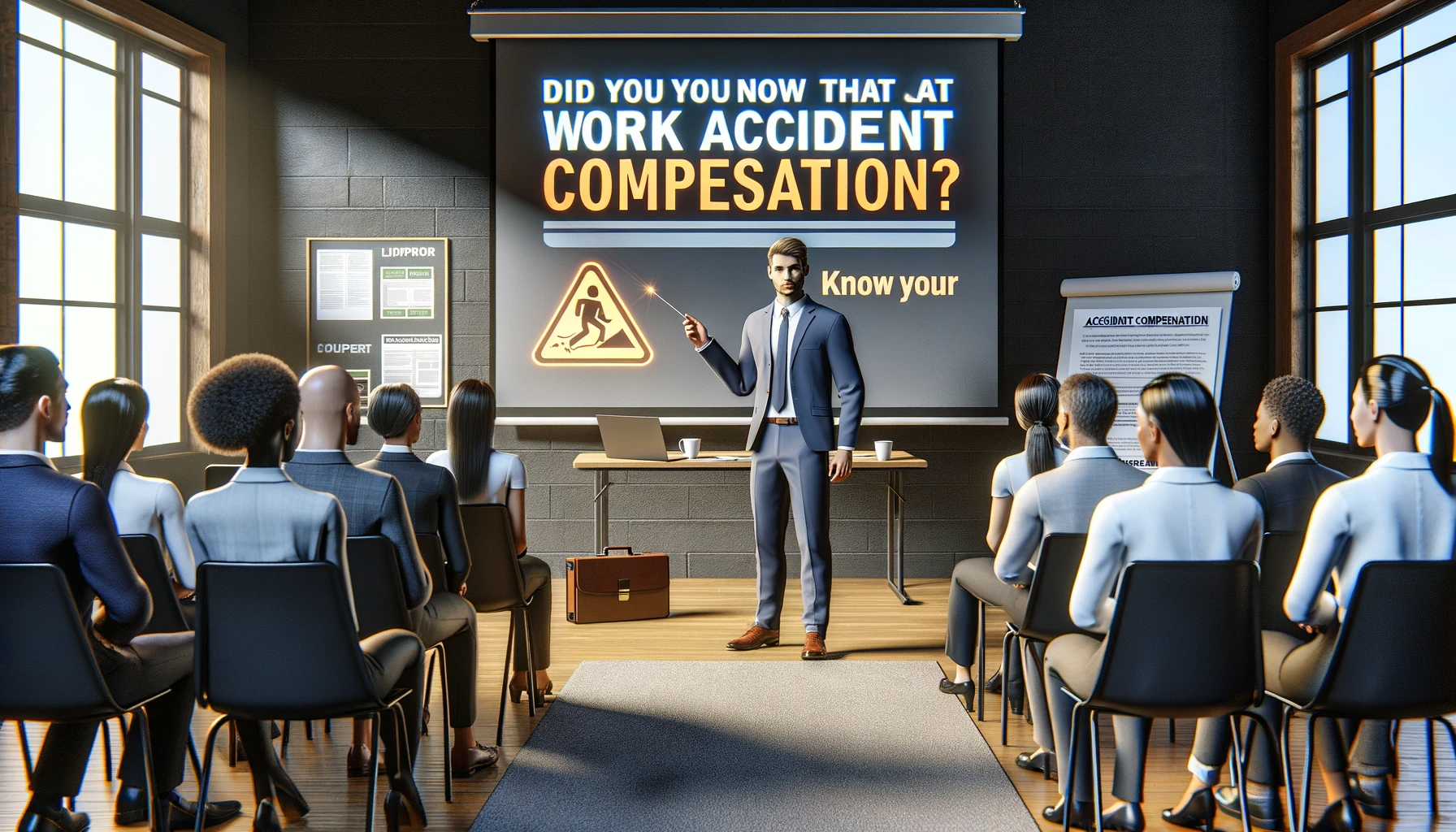In the bustling work environments of California, workplace accidents can occur despite the best preventive measures. When they do, it's crucial to conduct a thorough investigation to understand what happened and why. But how exactly is a workplace accident investigated in the Golden State? Let's dive into the intricate process that ensures employee safety and upholds legal standards.


Understanding the Workplace Injury Investigation Process
Immediately following a workplace accident, the priority is to attend to any injured individuals. Once the scene is secure, the investigation process begins. This involves collecting an injury incident report and documenting the scene with photographs or videos. Swift and accurate reporting paves the way for a detailed analysis of the events and helps uncover the causes of the incident.OSHA Regulations in California
The Occupational Safety and Health Administration (OSHA) sets nationwide guidelines, but California has its own set of regulations under Cal/OSHA. These rules are designed to be at least as effective as federal standards, sometimes even more stringent, to ensure the highest level of workplace safety. Familiarizing yourself with these regulations is essential to prevent accidents and ensure compliance.Reporting Work-Related Accidents
In California, employers are required to report serious work-related accidents to Cal/OSHA within 8 hours. The reporting process is a critical step in the workplace injury investigation process, as it triggers the official inquiry and ensures that the incident is recorded for future reference and action. Reporting promptly and accurately is vital to initiate a thorough investigation.
California Workers' Compensation Claims
After an accident, workers may file compensation claims to cover medical expenses and lost wages. Both employers and employees have responsibilities in this process, from providing necessary documentation to cooperating with insurance carriers. This system plays a pivotal role in supporting injured workers during their recovery and ensuring they receive the compensation they deserve.Workplace Safety Inspection
Regular workplace safety inspections are vital for identifying potential hazards before they result in accidents. Safety officers or inspectors may conduct these evaluations, ensuring that employer responsibilities for workplace accidents are being met and that the work environment adheres to OSHA regulations in California. These inspections help proactively address safety concerns.Employer Responsibilities for Workplace Accidents
Employers have a legal obligation to provide a safe work environment. This includes implementing accident prevention strategies, conducting regular workplace compliance audits, and addressing any identified safety violations promptly and effectively. Employers must prioritize safety and take proactive measures to prevent accidents.Accident Investigation Techniques
Investigating a workplace accident involves a variety of techniques, from interviewing witnesses to reviewing surveillance footage. A thorough investigation aims to establish a clear timeline of events and identify the root cause of the accident. Employing effective investigation techniques is crucial to uncover the facts surrounding an incident.Cal/OSHA Investigation
Should a serious accident occur, Cal/OSHA may conduct its own investigation to determine whether regulations were violated. The findings can lead to citations, fines, or other enforcement actions, emphasizing the importance of adherence to safety standards. Cooperation with Cal/OSHA investigators is essential to address any concerns promptly.Employee Injury Protocol
Employees should be well-versed in the employee injury protocol, which includes reporting the incident immediately, seeking medical attention, and cooperating with the investigation. Understanding their rights and responsibilities can facilitate a smoother recovery and return to work. Proper communication and adherence to protocols are essential in the event of an injury.Workplace Hazard Analysis
A proactive approach to safety involves regular workplace hazard analysis. This process helps identify potential risks and implement measures to mitigate them, contributing to a safer work environment and reducing the likelihood of accidents. Identifying and addressing hazards in advance is key to accident prevention.Job Site Accident Procedures
Clear job site accident procedures ensure an effective response in the event of an emergency. These guidelines cover everything from administering first aid to preserving evidence for the investigation. Effective procedures are vital to minimize the impact of accidents and ensure a swift and coordinated response.
Occupational Health and Safety
Maintaining occupational health and safety is an ongoing commitment. It involves training employees, providing appropriate equipment, and fostering a culture where safety is a shared responsibility. Consistent efforts in occupational health and safety are crucial to prevent accidents and protect employees.Root Cause Analysis in Workplace
Identifying the root cause of an accident is essential for preventing future incidents. Techniques such as the "Five Whys" help drill down to the underlying issues that need to be addressed. Conducting a thorough root cause analysis provides valuable insights into areas for improvement and helps in crafting effective accident prevention strategies.On-the-Job Injury Investigation
When an employee is injured on the job, a specific investigation focuses on the circumstances of the injury. The goal is to support the worker's rehabilitation and facilitate a safe return to work while preventing similar incidents. A comprehensive on-the-job injury investigation ensures that the necessary steps are taken to prevent recurrences.Workplace Compliance Audits
Regular compliance audits ensure that workplace practices remain up to standard. These audits can reveal areas for improvement and help maintain a high level of safety in the workplace. Consistently reviewing and updating workplace practices through audits is essential for ongoing safety.Safety Violation Reporting
Employees should know how to report safety violations without fear of retaliation. Whistleblower protections are in place to encourage reporting and ensure that issues are addressed promptly. Creating a culture where safety violations are reported and addressed fosters a safer work environment.Accident Prevention Strategies
Effective accident prevention strategies are the cornerstone of workplace safety. These include regular training, hazard assessments, and encouraging a culture where safety is prioritized by everyone. Employers and employees must collaborate to implement and continuously improve these strategies.Workers' Rights After an Accident
Workers have specific rights following an accident, including access to medical care and compensation. Understanding these rights is crucial for navigating the aftermath of a workplace incident. Employees should be aware of their rights and seek the support they need for a full recovery.Conclusion
A workplace accident investigation in California is a multifaceted process that involves immediate action, detailed analysis, and ongoing prevention strategies. By understanding the procedures and responsibilities involved, employers and employees can work together to foster a safer work environment and reduce the risk of accidents.Look for an attorney who has the right legal resources for your legal needs.
Contact us here on the Warmuth Law website or through our hotline 888-517-9888.











